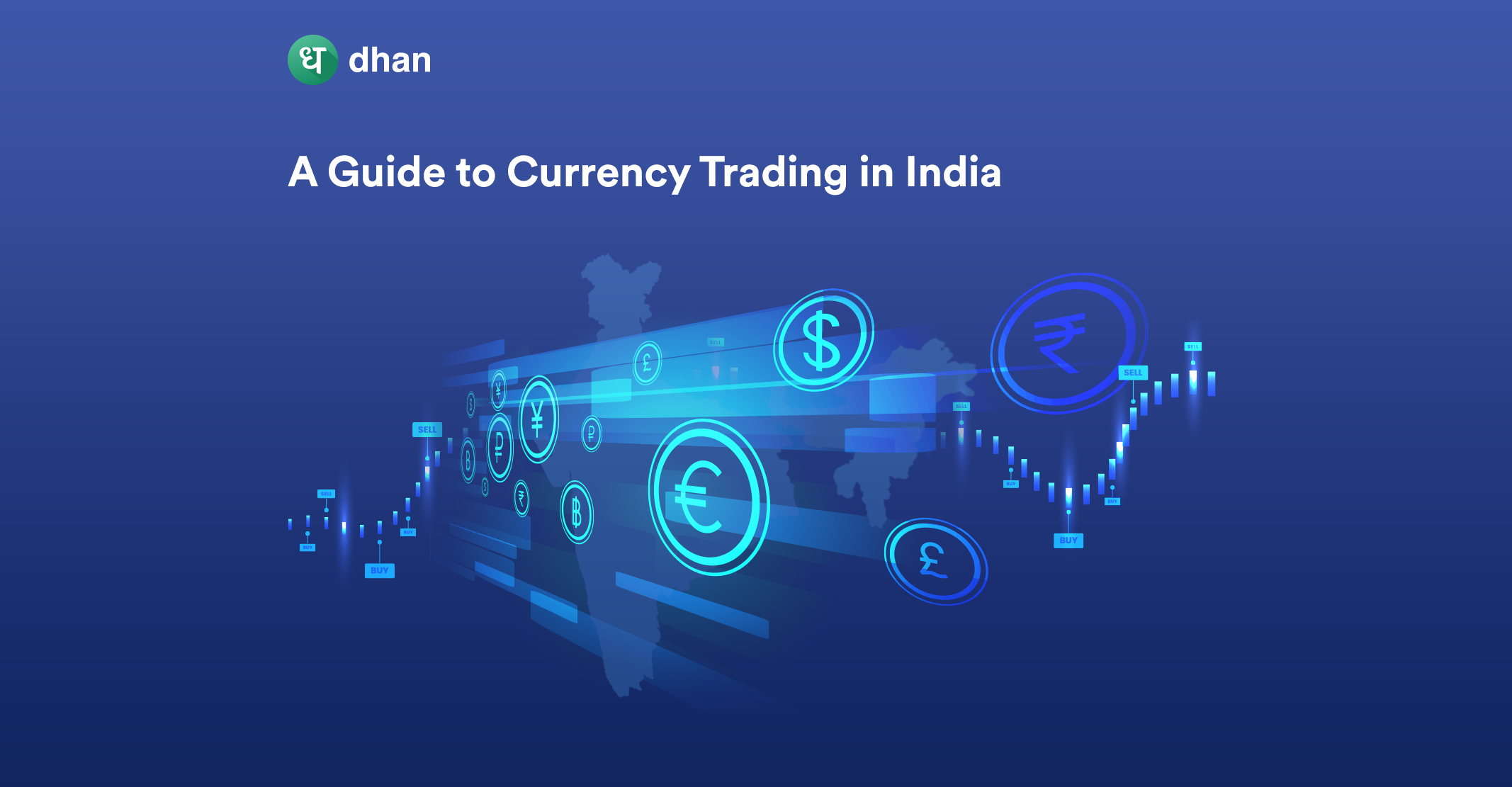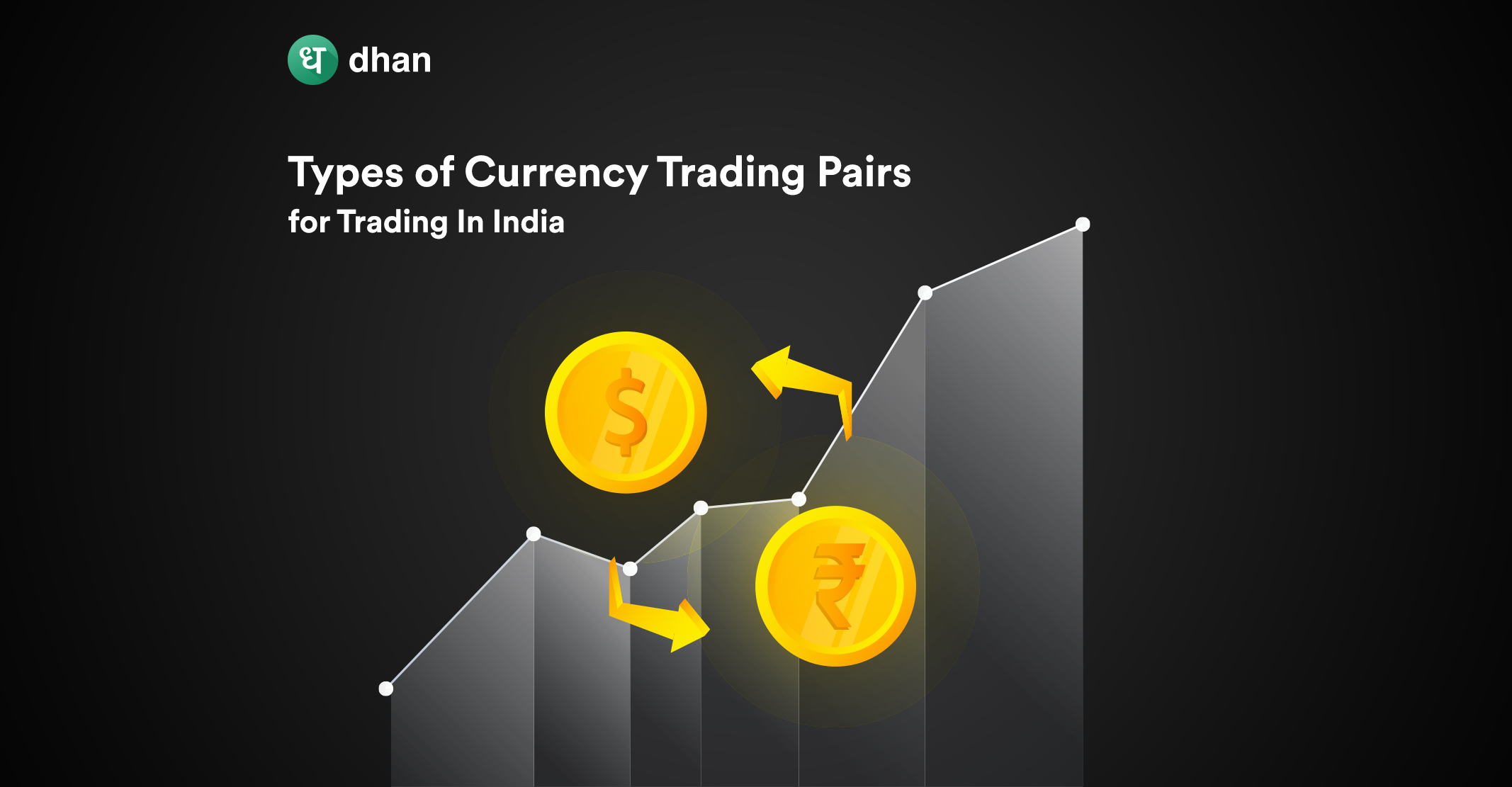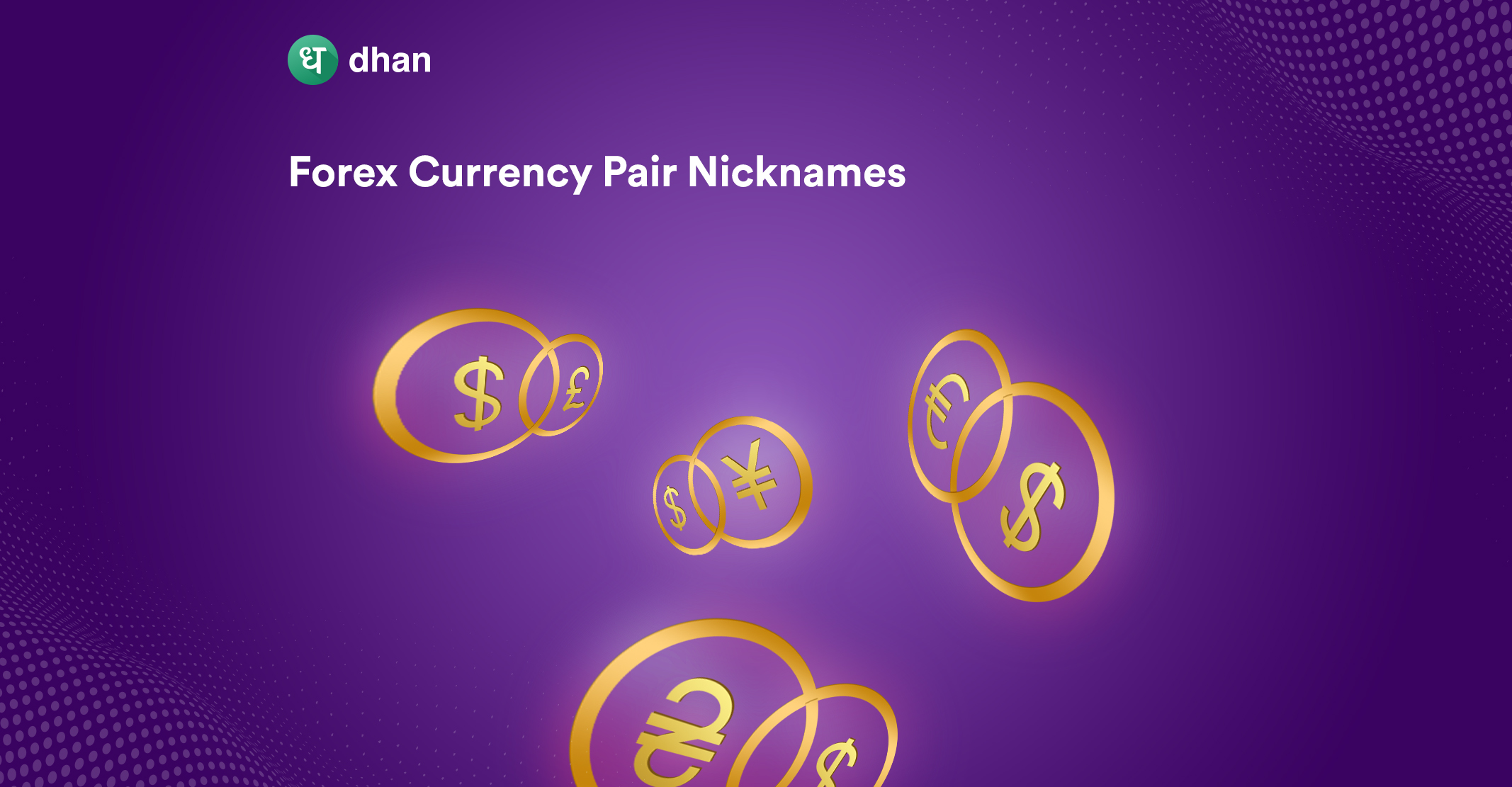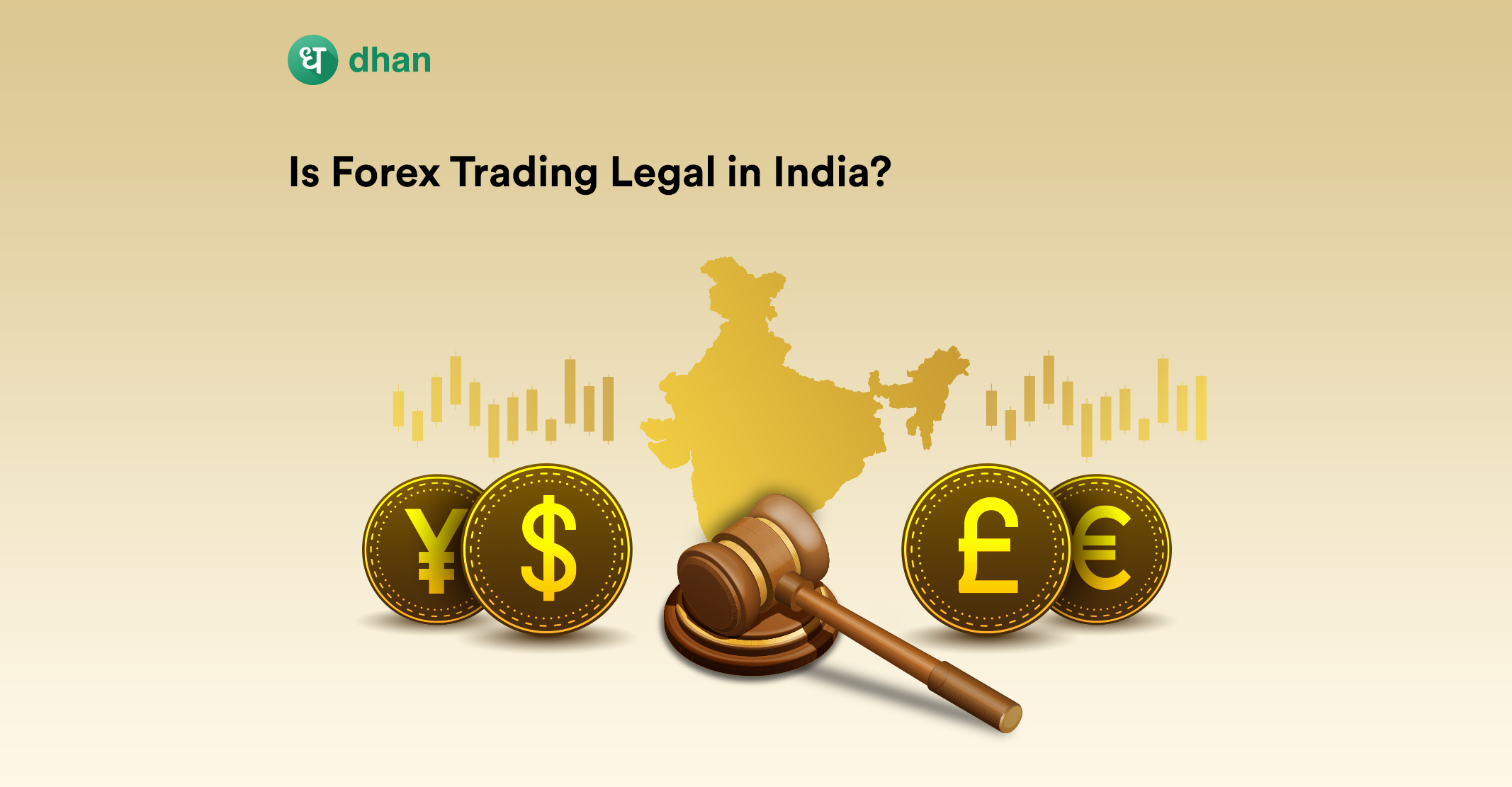The rise of trading platforms has unlocked multiple avenues for wealth creation. Not so long ago, these avenues were only accessible to a select few. Currency trading is the perfect example.
As recently as the 1990s, banks and large financial institutions were typically the main players in the forex market. The reason behind this is simple – forex trading is much more complicated than traditional stock trading.
That said, the payoff of trading currencies is also known to be relatively higher than trading stocks. That’s why many new-age individuals want to learn forex trading in India. If you’re one of them, this forex trading guide is for you.
What is Forex Trading?
What many refer to as the forex market is a diverse marketplace that’s home to equally diverse types of traders. The type of trading that you’re interested in involves buying and selling exchange-traded derivatives.
Forex trading of this type means taking positions on futures and options of a pair of currencies like USD-INR, EUR-INR, USD-JPY, and more. The first currency in the pair has a name. It is known as the base currency.
The base currency is what you see on charts and when the price movement of a forex pair is spoken about. Here is an example – the chart below shows the movement of USD in relation to INR.
The second currency in the pair is known as the quote currency. A currency pair reflects the amount of quote currency you need to buy a single unit of the base currency. For example, USD-INR is currently 1:79.42, which means you need Rs. 79.42 to buy $1.
Forex trading in India is only possible through derivatives like futures, options, swaps, and others. Here’s where things get interesting. If you trade stock derivatives, you can take delivery of the underlying shares into your Demat account on expiry.
This is also true for commodity derivatives in which you can take delivery of the goods. However, the delivery of currencies is simply not allowed for retail currency derivative traders in India. That’s why forex trades in India are cash-settled.
Most Indians have been involved in forex trading in some form or the other. If you’ve ever bought a product that’s been imported, you’ve been indirectly involved in a forex transaction.
You’ve also played a part in the forex market if you’ve traveled abroad by exchanging INR for another currency. However, you’re allowed to trade derivatives in the forex market, which works in a different way to the stock market.
What is the Forex Market?
Just like stocks are traded in the stock market, currencies are traded in the forex market, also known as the currency market. What you should also know is that Forex is a blend of two words: foreign and exchange.
The term forex is often used interchangeably with currency or FX. Here’s a mind-blowing fact. There’s no physical forex market anywhere in the world. In fact, the forex market is completely online and is connected via the internet, trading terminals, and brokers.
That’s also the reason why forex trading happens Over-the-Counter (OTC). There’s more. The forex market is open for 24 hours, 5 days a week in India and around the globe. But there’s a catch.
Not every domestic forex market is open around the clock. Most countries are based in different time zones, which is why the currency trading market operates for close to 24 hours. That said, India’s market hours for forex trading are 9.00 AM to 7.30 PM.
Here are the global forex market timings in IST.
| Country | Session | Open Time (IST) | Close Time (IST) |
| New Zealand | Pacific | 3.30 AM | 10.15 AM |
| Australia | Pacific | 5.30 AM | 12.30 PM |
| Japan | Asian | 5.30 AM | 2.30 PM |
| Hong Kong & Singapore | Asian | 6.30 AM | 2.30 PM |
| India | Asian | 9.00 AM | 7.30 PM |
| Germany | European | 11.30 AM | 7.30 PM |
| UK | European | 12.30 PM | 8.30 PM |
| USA | North America | 5.30 PM | 2.30 AM |
There are implications of these forex market hours. Currencies native to a country are tradable and liquid only during their domestic forex trading hours. Because of the round-the-clock trading hours, the volume of the forex market is high.
In fact, it’s significantly higher than any other market. Recent data suggests that the volume of the forex market was as high as $4 trillion (or higher). That said, “forex market” is an umbrella term – there are many sub-types.
Types of Forex Markets
We’ve discussed how the forex market is diverse. The forex derivative trading market is a subset of the larger forex market and it is, in and of itself, divided into multiple sub-market markets.
1. Spot Forex Market
The spot market is where currencies are exchanged at the market price or spot price. Spot trades are typically settled within one or two days. Moreover, spot forex trading has one more benefit.
It can allow access to intraday fluctuations in currency prices. While the spot market offers a quick, easy, and low-cost way to tap into currencies, it is almost exclusively reserved for banks and other financial institutions.
Trading currencies on the spot is not legal in India, although the RBI did release a discussion paper about it in 2017.
2. Futures Forex Market
A currency futures contract is a standardized agreement between a buyer and a seller. It lays out the terms and conditions like the date and price. Furthermore, there’s little to no counterpart risk.
The futures market is well-regulated and liquid as there are rules to penalize defaults while multiple traders can take part. This is an important point because it sets the futures market apart from the forwards market.
3. Forwards Forex Market
A forwards contract is similar to a futures contract – a buyer and seller are involved who agree on terms and conditions along with the date and price. That said, the forwards market is unregulated and illiquid.
Individuals can write contracts that suit them to the tee while there’s a lot of uncertainty involved due to counterparty risk. Furthermore, the length of a forwards contract can be long, which can lead to price-based risks.
4. Options Forex Market
The options market is where a forex trader can buy or sell an options contract for an underlying currency pair. The contract gives the buyer the option to buy a currency pair at a pre-agreed price and date.
Just like the futures market, the options market is well-regulated and liquid. That’s why the amount of counterparty risk is significantly low. Currently, options trading is only allowed for USD-INR in India.
5. Swaps Forex Market
Swaps are to options what forwards are to futures. Just like an options contract, a swap gives the buyer the option to buy or sell the underlying currency pair at a pre-agreed date and time.
But just like the forwards forex market, the swaps forex market suffers from issues like a lack of liquidity and reliability. This is mostly because the swaps market is unregulated and open to relatively high counterparty risk.
How Does Forex Trading Work?
We’ve established that currency trading happens between a pair of currencies. In India, you as a retail individual can only trade a set of currencies approved by SEBI. These forex pairs can be split into two groups.
Types of Currency Pairs You Can Trade in India
First up is a pair with INR as the quote currency. The base currencies include The USA’s USD, Europe’s EUR, Japan’s JPY, and the UK’s GBP.
- USD-INR
- EUR-INR
- JPY-INR
- GBP-INR
Next is a pair of two foreign currencies. Indian forex traders can access three cross-currency pairs with USD as the quote currency on two of them.
- EUR-USD
- GBP-USD
- USD-JPY
How Currency Pairs are Traded in India
The currency pairs mentioned above can only be traded via derivatives like futures and options. A currency futures contract gives the buyer the right and the obligation to buy the underlying currency at a pre-agreed price and date.
A currency options contract gives the buyer the right but not the obligation to buy the underlying currency at a pre-agreed price and date. Remember that futures and options are speculative, meaning currency trading is risky.
In India, trading futures is possible for all currency pairs. But options trading is only open for USDINR. Derivative currency contracts include quotes that stretch to the 4th decimal.
The logic behind this is solid. Even minor decimal values can have a major impact when a volume of currency is traded. In fact, the 4th decimal value is known as the pip, short for percentage in point. For USDINR, a pip is 0.0025.
Lot Size for Currency Pairs
While we’re on the subject of derivative contracts in currency trading, you’d be interested to know the lot size of futures or options in the forex market is the base currency in thousands.
What this means is simple – if you see a derivative currency contract that has lot size = 1, it means the contract contains units of the base currency worth at least 1000. Here is the lot size for all tradable currency pairs in India.
| Currency Pair | Lot Size |
| USDINR | $1000 |
| EURINR | €1000 |
| GBPINR | £1000 |
| JPYINR | ¥1,00,000 |
For example, if a forex trader wants to trade $2000 worth of USD, they’ll have to buy 2 derivative contracts of USD-INR. Similarly, if a trader wants to obtain €1000, they will buy 1 derivative contract of EUR-INR.
Fun fact: USD is called Greenback while the EUR-USD forex pair is known as Fiber. Read this story to find out why: Forex Nicknames Explained: Cable, Fiber, Chunnel, & More!
Expiry of Forex Derivative Contracts
There are three things in the derivatives market that are guaranteed – margins, taxes, and contract expiry. Every derivatives trader knows this as all futures and options have an expiration date.
The case is no different for forex derivatives. Futures and options of currency pairs in India are known to expire two business days (working days) before the last working day of the month. The time for expiry is set at 12.30 PM.
Authorized Exchanges and Brokers
Trading currency derivatives in India is legal but only through the exchanges and brokers that SEBI has approved. The SEBI-approved currency trading exchanges include:
- National Stock Exchange (NSE)
- Bombay Stock Exchange (BSE)
- Metropolitan Stock Exchange of India (MSE)
There are various authorized brokers for currency trading, and Dhan is one of them. Furthermore, SEBI is known to periodically revisit position limits and other rules for exchange-traded currency derivatives.
You can read about that and more currency trading regulations in this blog: Is Forex Trading Legal in India? Everything You Must Know!
At the end of the day, forex reserves are crucial to a country’s financial stability. That’s why the regulations in the forex market and the currency derivatives market are stringent.
Pros and Cons of Forex Trading
As with any form of wealth creation, trading currencies has pros and cons that a trader can use to make informed decisions. These are some of the top ones you should be aware of.
Pros of Forex Trading
- Wealth Creation: If done right, trading currency pairs can lead to potentially lucrative returns
- High Liquidity: There’s no other market on the planet that comes close to the forex market in terms of liquidity
- Easy to Access: It’s easy to set up a forex trading account with a reliable broker like Dhan and start trading currency pairs at standard prices
- Low Fees: Unlike ETFs & mutual funds, there are no management fees applicable to currency trading – only brokerage charges
Cons of Forex Trading
- Over-the-Counter: The forex market is generally not as well regulated as the stock or commodity market
- High Starting Capital: Trading currencies is known to require a higher starting capital compared to stocks or top ETFs
- Bigger Players: Forex trading is home to banks and other large financial institutions that have a sway on the way currencies are priced
Although you may see some overlap in the advantages and risks, it is important to note that currency trading is a different ballgame from stocks and commodities.
That’s why it’s crucial to understand why people learn forex trading thoroughly before jumping into the world of currency pairs.
Why Do People Learn Forex Trading?
Retail individuals learn forex trading to earn profits. It’s as simple as that. But the question is, how does a currency trader earn profits? The answer can be “in many ways”.
For example, an options trader can profit from the premiums. Forex traders with a high risk appetite may even short currency derivatives to earn potentially high rewards.
The possibilities for profits are endless. But the same statement applies to risks as well. The forex trading market is influenced by happenings from around the world, much more than stocks and commodities.
That’s why there are forex trading strategies designed to work on top of tried and tested principles, often on the basis of technical analysis. You may have heard of these forex strategies in the world of stock trading as well.
Forex Trading Strategies for Beginners
Before jumping into any trading strategy for forex, it’s useful to understand going short and going long. The former is a bearish outlook on a currency pair while the latter is a bullish view.
There are countless forex trading strategies for going short, long, or both. We’ve covered some of the most popular ones.
- Position Trading: A long-term strategy that uses fundamental analysis complemented with technical analysis (almost mirrors investing)
- Scalp Trading: Involves earning small chunks of profits frequently, typically during intraday, in highly liquid currency pairs
- Swing Trading: The strategy of generating frequent profits by riding price swings & trends
- Price Action: Creating technical strategies based on historical prices across a specific time period
- Trend Trading: Using directional market momentum to generate profits across the medium to long term
Determining the right forex strategy for you as a beginner can be tough. Most experienced traders who buy and sell currency pairs are known to select a trading strategy that is in line with their risk appetite.
How to Start Trading Currencies in India?
The process to get started with currency trading involves selecting the right broker. “Right” in this case means a broker with a stellar reputation operating under proper rules and regulations.
After that, you will need to open a currency trading account to participate in the forex market in India. As with opening any trading account, you’ll have to go through a KYC process.
Dhan allows you to open a currency trading account for free. Ready to explore? Watch this video.
FAQs on Forex Trading in India
Q. Is Forex Legal in India?
Yes, forex trading is legal in India and can be done through recognized brokers like Dhan. There are 7 forex pairs that you can trade in India. Get the complete list here in Types of Currency Pairs for Trading in India.
Q. How Can I Trade Forex in India?
You will need to open currency trading account to take part in the forex market. The process is straightforward and includes a KYC process similar to opening any other trading or Demat account. Once you have an account you can trade forex in India.
Q. Which forex pairs are legal in India?
The types of currency pairs that you can trade in India include major pairs like EUR-USD, USD-JPY, and GBP-USD; currency crosses like EUR-INR and GBP-INR; exotic pairs like JPY-INR.
Disclaimer: This blog is not to be construed as investment advice. Trading and investing in the securities market carries risk. Please do your own due diligence or consult a trained financial professional before investing.




Comments are closed.